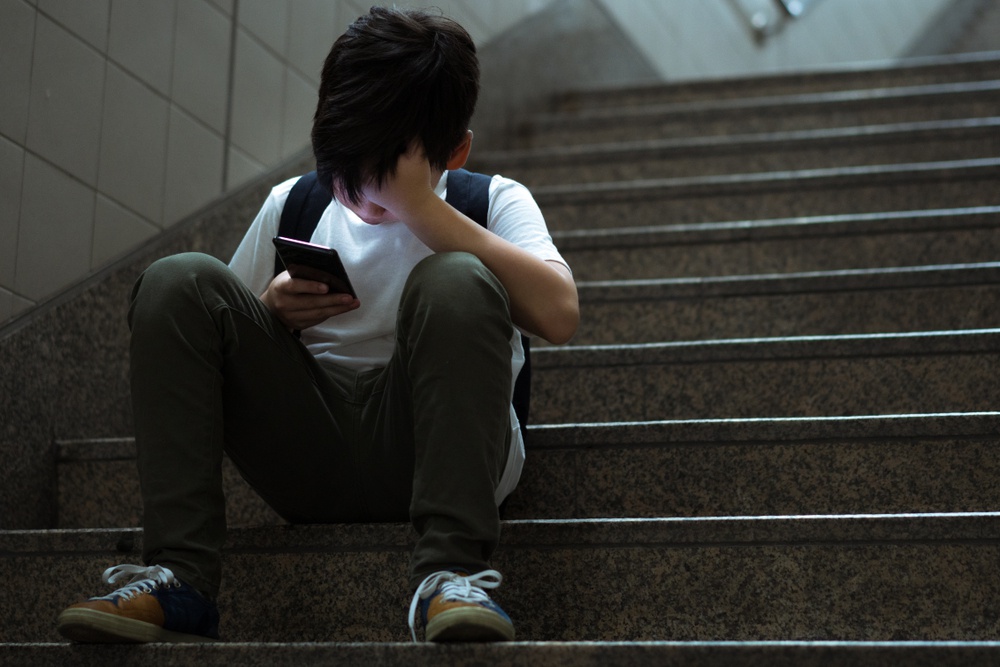Opinion: cyberbullying, that cruel app in the face

Today everything is a trend.
Take the nature of bullying. Once the refuge of the frustrated teenager, primarily one in the throes of puberty, it has mutated into something far uglier, more manipulative and dangerous: a hashtag.
Physical intimidation has now been replaced by psychological torture, blackmail and particularly body shaming – all avenues that, before cyberspace, could only really be dished out in a note passed in class, or a punch thrown in the playground.
Much like the bane of many a teenager’s existence, it comes down to modern aesthetics. Life within the screen offers more than the threat of physical pain. Its tools are legion: the screenshot, the webcam, the candid, happy slapping. All are viable, even expected forms of intimidation and threat.
There is a category for every element of life: revenge porn for the broken relationship; leaked nudes for the rejected lover; accusations of homophobia, of racism, of every negative trait. All of these are then piled upon by Internet masses, which feel the need to share their opinion on something that is both beyond their reach, and, more importantly, usually inaccurate. It’s mob rule, the sort of hype that led to townsfolk marching with flaming torches.
The toll of these sorts of attacks can be catastrophic.
Statistics are proving horribly prophetic. More than 58% of children (according to research by internet watchdog Do Something.org) admit to being victims of online bullying. It’s a statistic that has been treated, by the mainstream media, in fairly sensationalistic fashion, but there is at least something hopeful in the fact that such problems are being talked about at all.
A cyberbully attacks on multiple levels. There are social media platforms that provide the perfect forum for public humiliation. On private message boards, rumors, lies and accusations are thrown into the mix, like a digital watercooler conversation. The victim is, typically, the last to know. And while the cyberbully doesn’t discriminate – everybody is fair game in the race to have the loudest status update – research has also shown that females are twice as likely to be both victims and perpetrators, than males, which would suggest that gender sticks to its own.
The clique, it seems, has gone digital.
In the late ’90s, mobile phones began to circulate one of the first “viral” phenomenons: the happy slap. Grainy phone video images showed the vulnerable being hit by a neighbourhood thug.
And this was just the beginning.
Not surprisingly, but rather depressingly, the mobile phone remains the favoured means of the cyberbully, as over 80% of teenagers use them – and a multitude of already built-in apps – on a regular basis.
Between 2005 and 2015, according to the Paediatric Academic Society, hospital admissions for teenage victims of suicide attempts doubled, a figure reinforced by the steady rise during that time, of social media as the one and only means of a status within a community (one that, frankly, doesn’t exist). It’s easy to forget that our lives are now being dictated and shaped by ones and zeroes; a mere website can make or break a reputation.
But looking beyond the teenager, the facts get even scarier. Middle aged bored ‘trolls’ have found a comfortable amount of space online, particularly on Twitter, a platform specifically designed to encourage conversation, intelligent or otherwise. Indeed, browse an average Twitter news feed and you’re more likely to find arguments and personal attacks than the sharing of useful information or good news.
We don’t thrive on good news anymore: only trivial, petty chaos. The gift of context, or tone of voice, is completely lost in a world where its inhabitants don’t meet face to face.
That is the very nature of the internet troll. They have no motivation outside of a desire to be heard, to have their day, to shock and upset.
The steady increase in mental health issues within the millennial generation goes hand in hand with the progress of technology. You don’t need polls or statistics to see the correlation between the two. With more and more of the youth conducting their lives within the many rectangles of code, all easily held in the palm of their hands, we see a disconnect, the sad antipathy of this miraculous technology’s intent.
But then, there is no algorithm for human decency. The screen is an effective wall that can block out the you in your personality. On the internet, you can be whoever you want to be. That a large percentage decide to be negative is telling.
Yes, today everything is a trend. And nothing trends faster, it seems, than cruelty.

